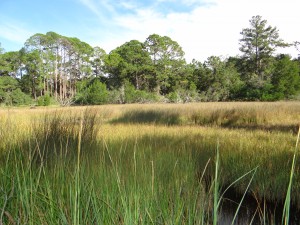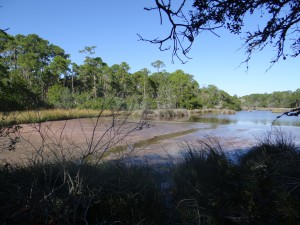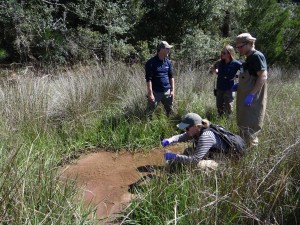Jekyll Island State Park is a veritable “turducken” of some of the best things the Georgia Coast has to offer: It’s a state park with beautiful natural areas, the Sea Turtle Center, and fantastic conservation programs; it’s a tourist destination with a grand historic hotel, golf course, and beautiful beaches; and it’s a residential community — yes, inside a state park! In creating this haven, however, a few ecological covenants were broken. The main road onto the island was built across a marsh system that arced through the center of the island. Now, on one side of the road is a marsh fragment long severed from its ocean access, and it’s showing signs of distress.
The pond has bacterial and algal blooms, which makes the site unappealing to wildlife and visitor’s noses alike. Affectionately dubbed “stinky pinky” for the rosy hue of the bacterial blooms, this marsh fragment is the focus of an applied research and restoration project being conducted in collaboration with Ben Carswell, Kimberly Andrews, and Yank Moore, Jekyll Island’s ace ecologists, as well as Susan Wilde (UGA Warnell School of Forestry & Natural Resources). We are comparing its hydrology, water quality, vegetation, and wildlife status to several other less-impacted marshes, in order to gauge the severity of its degradation and to serve as potential reference sites for restoration. If our ecological assessment indicates good recovery potential, “stinky pinky” may soon be reunited with its historic channels.


